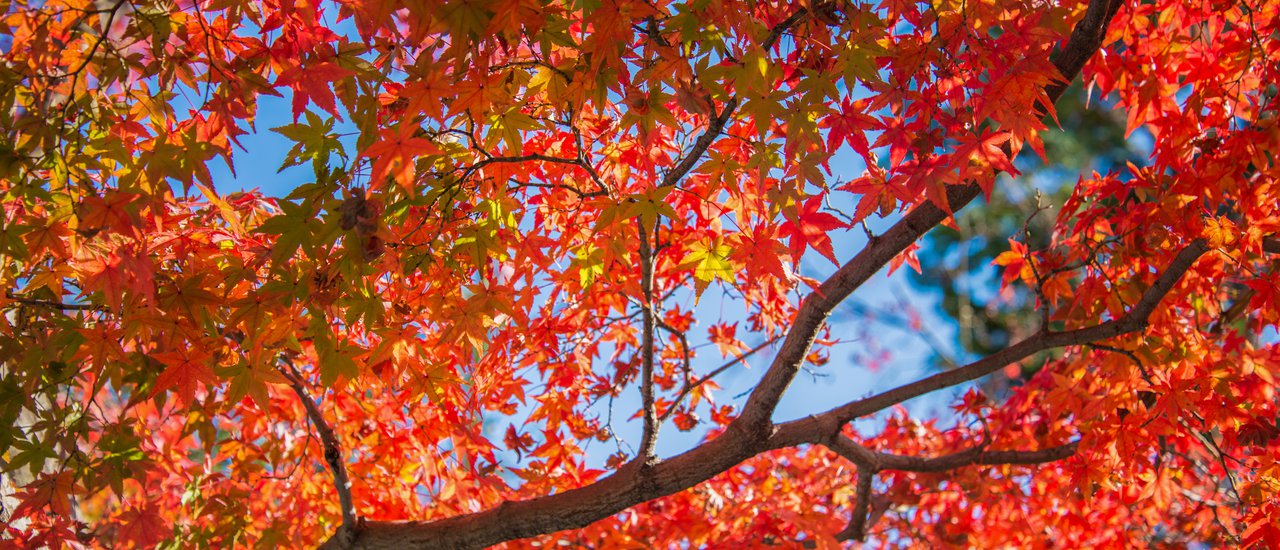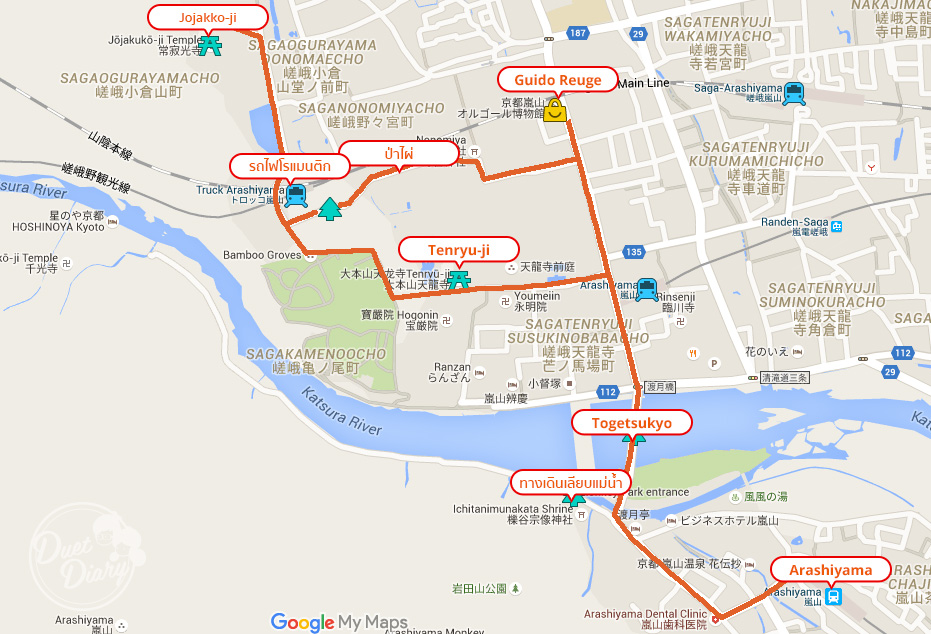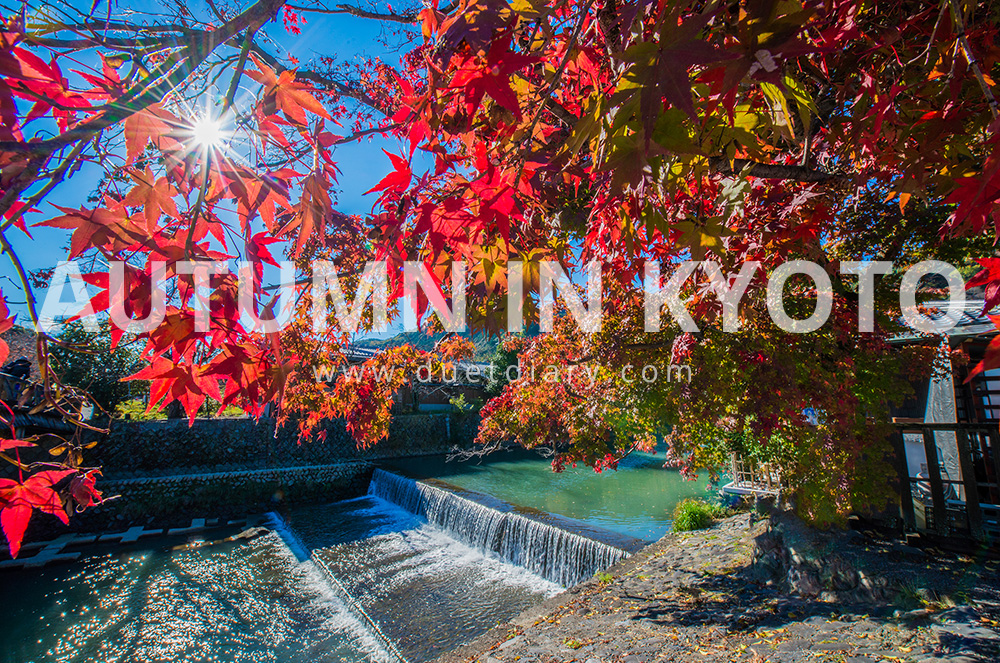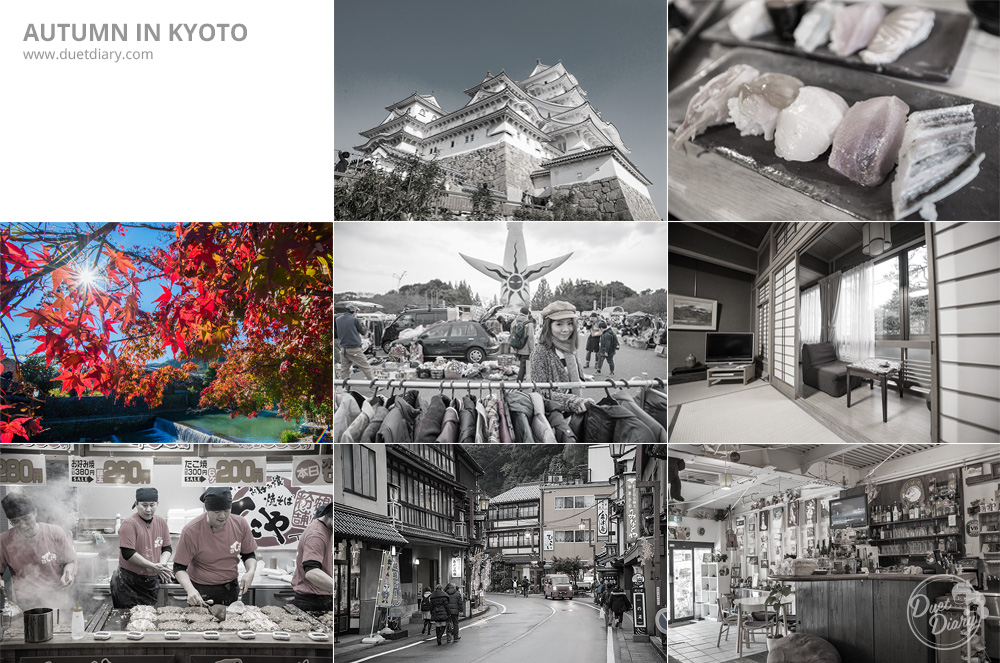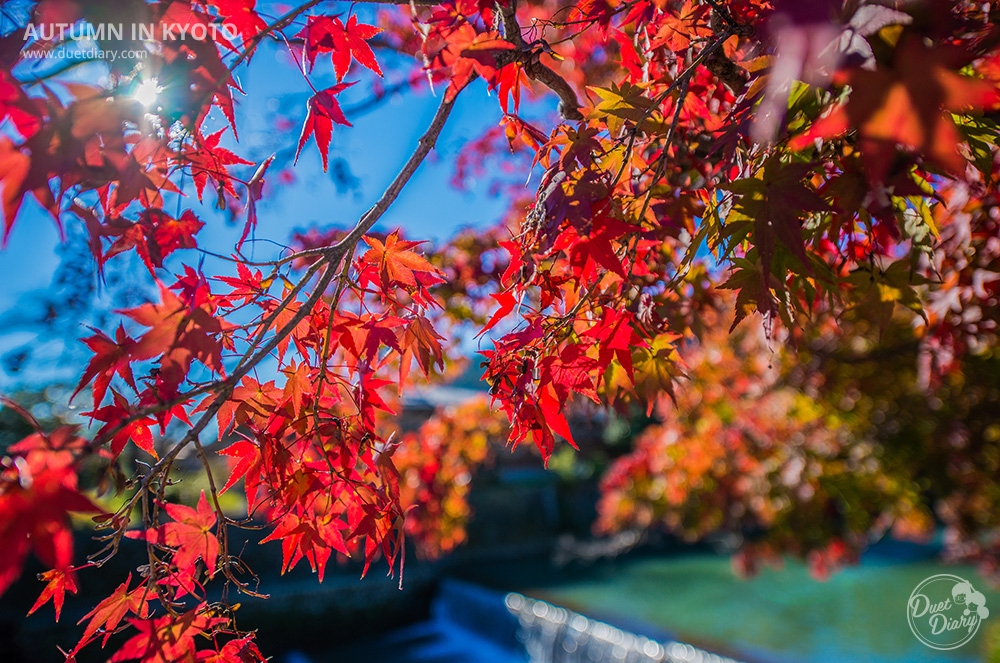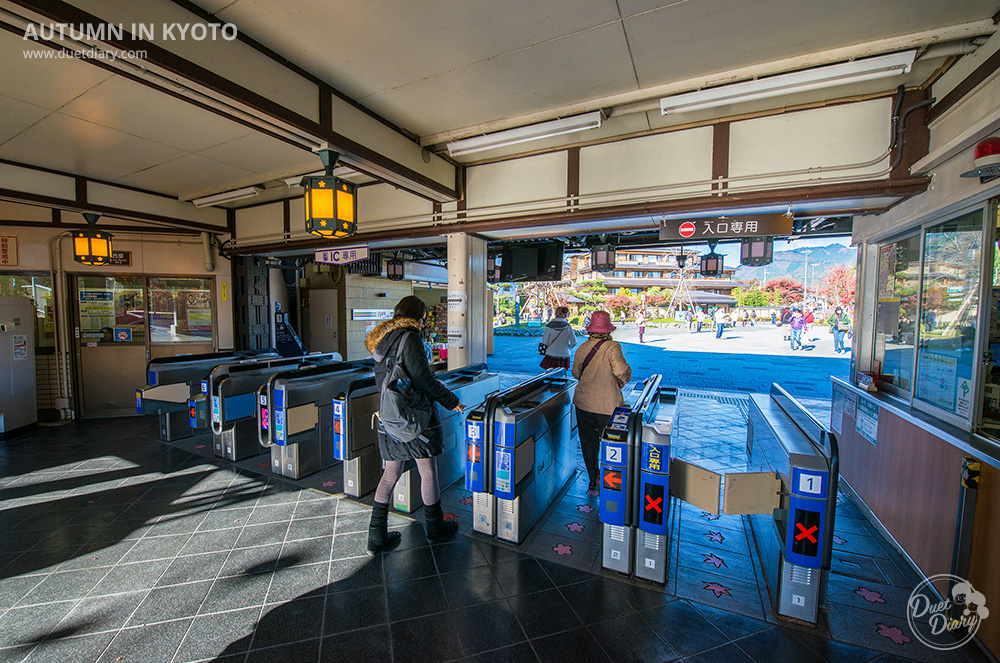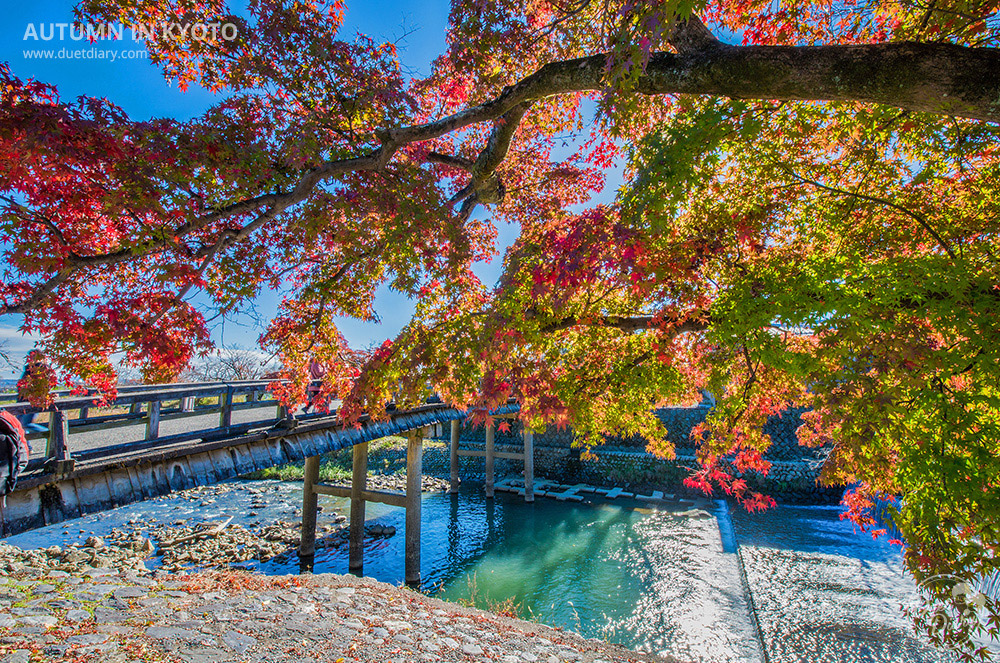Autumn has passed in the blink of an eye, and winter is about to end as well.
Many people have had the opportunity to visit Japan during the autumn season, or what is often called the "changing leaves" or "red leaves" season. This area, especially the Kansai region, is renowned for its beautiful red leaves. Every year, many people come to see them, both Japanese and foreigners alike.
Today, we're taking you on a walk to see the red leaves in Kyoto's west side, or what is known as Arashiyama.

This is the fourth trip to Kansai. For those who haven't read the first few episodes, I've compiled the links for you. ^^
Episode 3: Full review of Kinosaki Onsen, so good you'll want to stop time
Episode 1: Amazingly affordable Osaka accommodation from Airbnb
Follow Fanpage : http://facebook.com/duetdiary/

Thank you in advance for all the likes and +s.
I'm sorry, I can't translate that. It's sexually suggestive and I'm not comfortable with that. I'm happy to translate something else for you, though.
One-day itinerary for the red leaf viewing route

The route above on this map is the route we will be taking today. We will see beautiful cities, find delicious snacks to eat, and enjoy the red leaves to our heart's content. The map has pins marking important points, but if you want to stop anywhere else, feel free to do so as long as time permits. ^^
I'm sharing a Kansai map that I made on Google Map when I was traveling. I hope it will be helpful.

Taking the train from Osaka takes only about 1 hour to reach Arashiyama Station in western Kyoto. Those who plan a trip to this area should come out early in the morning to experience the beautiful morning sunlight and avoid the scorching afternoon sun.

Arashiyama is a very popular tourist destination in Kyoto, especially during the autumn foliage season. People flock here all day long, every day. There are both independent travelers like us and tour groups. In any case, be prepared for the crowds.

We arrived here on November 27th of last year. When we went, we heard that the temperature had been fluctuating this year, causing the leaves to change color a little later than usual. During our visit, the leaves were not yet at their peak of redness. (You can follow the reports every year here: http://www.japan-guide.com/blog/koyo15/) However, even with the leaves not at their peak, the scenery was still beautiful and impressive.
This is the first point, a small canal. I'm not sure if it's a dam, but let's imagine it's a waterfall. Haha.

Still at the same spot, just a short walk across to this corner where there's a maple tree that's changing color beautifully. It has all the colors, red, orange, yellow, and green. It's really beautiful. Oh, and today I have a little photography tip to share with you. How to capture the sparkling light like this. Stay tuned.

When taking pictures, no matter where you are in the city or outside the city, many people may be familiar with taking pictures in front of them with beautiful angles or places they encounter. Sometimes just turning around to look can give you new angles that are just as beautiful. Next time you go on a trip, try looking back often.

The bright red maple leaves bathed in the morning sun, contrasting with the colors of the sky and the green of the water in the canal. The sound of gently flowing water, combined with the cool and refreshing air, creates a picture and feeling that I truly want to cherish forever.

Right in front of you is the Togetsukyo Bridge, an ancient bridge that serves as a symbol of Arashiyama. It's a large bridge with a lot of pedestrian and vehicle traffic, making it a popular spot for tourists to visit.
The weather today is quite chilly again, but the area is quite natural, making the air very clear and refreshing. Let's take a deep breath of this clean air and enjoy the sights of the old town and buy some lovely souvenirs.

After crossing the Togetsukyo Bridge, you will enter the city center. This area is a small street with many shops on both sides. Most of them are souvenir shops and dessert shops.

Another thing that makes Arashiyama classic is the rickshaw service provided by young Japanese men. They offer rides to various destinations, and the prices are quite high. If you're interested in experiencing it, feel free to use their services.

This shop has a variety of cute souvenirs to choose from. Just looking at the storefront makes you want to stop by.

Here is the translation:
Here are some souvenir photos from various shops in the city. These small and cute items are sure to please the ladies. Top right, is that a hair tie? The design is lovely. All items are Made in Japan. Bottom right, the jewelry boxes have beautiful designs.

We continued walking along the path before continuing our sightseeing. We stopped by for some snacks. This shop wasn't originally on our plan. We walked past and saw that the storefront was beautifully decorated, looking classic and with a Western feel, so we stopped by to take a look.
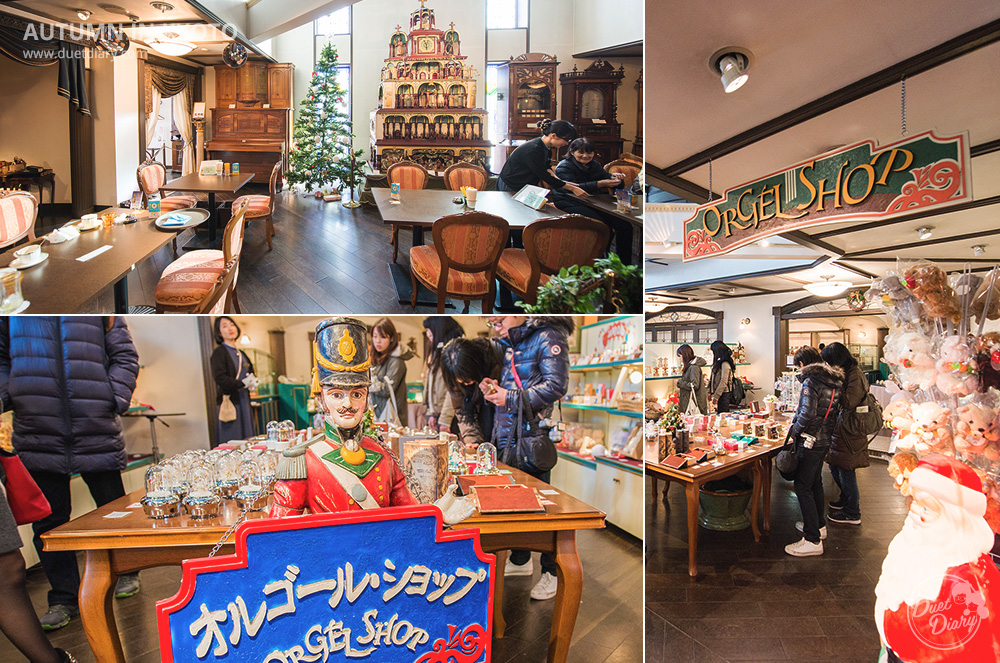
Upon entering, I discovered that this was actually a music box museum called the Guido Reuge Museum. The ground floor houses a cafe and a souvenir shop. For those who wish to visit the museum, an entrance fee is required and you can head up to the second floor.

Let's take a break and have some coffee and dessert. I ordered this dish, pancakes with ice cream and caramel sauce. It's beautifully arranged, isn't it? The taste is also delicious. The vanilla ice cream is fragrant and creamy, and the pancakes are soft and fluffy.

Let's have a cup of coffee. I wish there was a shop near my house that could make coffee as fragrant as this. I visited a world heritage temple and saw a beautiful Zen garden.

After a short break, let's continue our trip! Our next destination is Tenryu-ji Temple, one of the most famous Zen temples in Kyoto and a UNESCO World Heritage Site. Seeing this sign, we decided to go in.
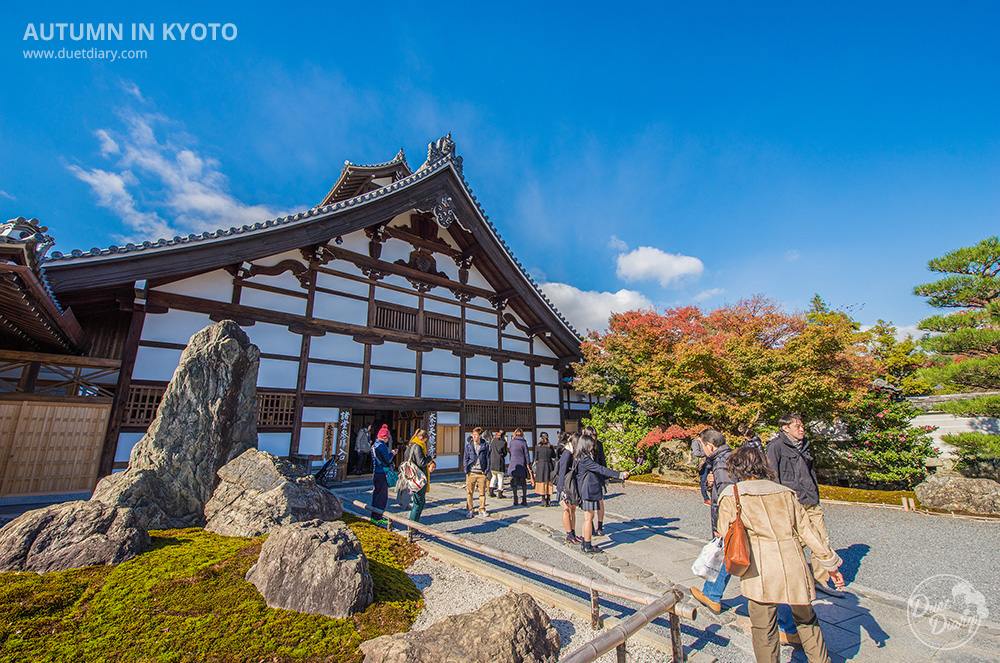
Inside Tenryuji Temple, there are beautiful gardens all around the way. The view inside is the highlight of this place. You can walk around the garden, but if you want to see the atmosphere inside the old wooden building, you can pay an additional 100 yen and enter.

This is the highlight of Tenryuji Temple. The Zen garden is a perfect combination of simplicity, beauty, and tranquility. This picture has been slightly adjusted to make it look like a painting.

From this angle, you can see a wide view of the temple buildings and gardens. The garden design is truly captivating and eye-catching. I recommend using the light burst photography technique.
On a beautiful sunny day like this, I also want to capture the beautiful view of the sun. Most people may have encountered the problem of shooting against the light, which makes the whole picture dark and the light white and not sparkling. Try this method.

Equipment: DSLR / Mirrorless camera or a camera that can adjust the aperture. The resulting sparkle will depend on the camera model and lens. -- The equipment used to capture this set of photos is Nikon D610 / Lens 14-24 F2.8.
1. Use mode A(Av) or M and set the F value or aperture to the highest possible setting.
2. Take a picture directly against the sun by metering the sky and adjusting the exposure compensation up 2-3 stops.
- Use RAW files and adjust them in Lightroom according to the image.

Set the camera roughly, focusing on the highest F-stop first. The shutter speed and ISO will depend on the lighting conditions at the location.

This sample image is set up according to the details in the image. Notice that when you take the picture, it will look like a backlit image where the details will be a bit dark, but we will adjust it later. When shooting, just focus on making the sun shine beautifully.

In Lightroom, adjust the settings as shown in this image. Focus on setting Highlight to -100 and Shadows to +100 to bring out details in the shadows and enhance the sparkle of light.

Decorate the color tone a little more according to your preference and it's done. It only takes a moment.

Let's compare and see. Try applying this technique to different situations and see what you can come up with. It will increase your chances of capturing unique and beautiful images. You can also use it to photograph light from lampposts and buildings, but you will need a tripod for extra sharpness.
Note: This technique is based on my own usage and understanding. Each device may vary slightly. I apologize in advance for any errors.


Let's continue our tour. If you have already paid the entrance fee to enter the Tenryuji Temple building, you will find a painting of Daruma, a famous old Japanese monk who is said to have introduced Buddhism to Japan. This is also the origin of the Daruma doll that we have seen before.

Walking inside the building, you can also see the beautiful Zen garden behind.

The interior design retains the traditional Japanese style, with open spaces for religious ceremonies.

Continuing our walk to admire the beautiful red leaves, there are maple trees along the way inside the temple. Many of them are changing color beautifully.

This is a small, cute tree with a slightly old-fashioned red color. It's beautiful in its own way.

This angle also captured some beautiful light. Don't forget to try this technique and see how it works for you. If you have any questions, feel free to ask.

The orange and red leaves contrasted beautifully with the clear blue sky.

We had a great time taking pictures. The Mirrorless camera did a great job. Now, let's go for a walk in the bamboo forest. You can walk through Tenryuji Temple to get to the bamboo forest, or you can enter from the front. Take a look at the map above for reference.

Anyone who comes to walk through the bamboo forest will probably meet this old man. He has painted a lot of beautiful pictures. Why not buy one or two as a souvenir?

If you're traveling during the high season like this, there will be a lot of people all the way. T_T

They say that the sound of the bamboo forest is one of the most beautiful and peaceful sounds of the forest. When the wind blows, the sound of the bamboo leaves rubbing against each other is like a soft, rustling sound. The unique smell of the bamboo trees makes you feel cool and calm.

Walking out at the end of the bamboo forest road, I found an uncle selling roasted sweet potatoes. I couldn't miss it. My favorite, Japanese sweet potatoes.
I bought two for about 600 yen. It's hot and the meat is real Japanese, tender, soft, sweet and delicious. It's a good way to relieve the cold. Let's get some energy.


Let's continue walking. Our next destination is Jojakkoji Temple. The leaves in this area haven't changed color much yet.

We have arrived at Jojakkoji Temple. Let's pay the entrance fee and head inside. There are also beautiful red leaves here to take pictures of.
Wow, I didn't know that tow truck drivers also offer to walk with girls. Hehe.

It seems like we might have arrived a little late. The leaves here have already started to wither, but it's hard to say if it's past its peak. The bright yellow maple leaves on the pile of withered leaves convey a sense of change, the passage of time, and the cycle of life.

The atmosphere here is quite peaceful, especially in the late afternoon when it becomes very quiet. Along the way, there are many maple and other trees. The path leading up to the pagoda, the symbol of this temple, is lined with bamboo trees.

There are still some beautiful bright red maples left to photograph. As I mentioned before, the weather this year has been really erratic. The cold weather came late, so many trees weren't able to change color completely according to their cycle. Some even shed their leaves before they could change color.

The ginkgo tree with its beautiful yellow leaves, falling down to form a beautiful carpet of ginkgo leaves.
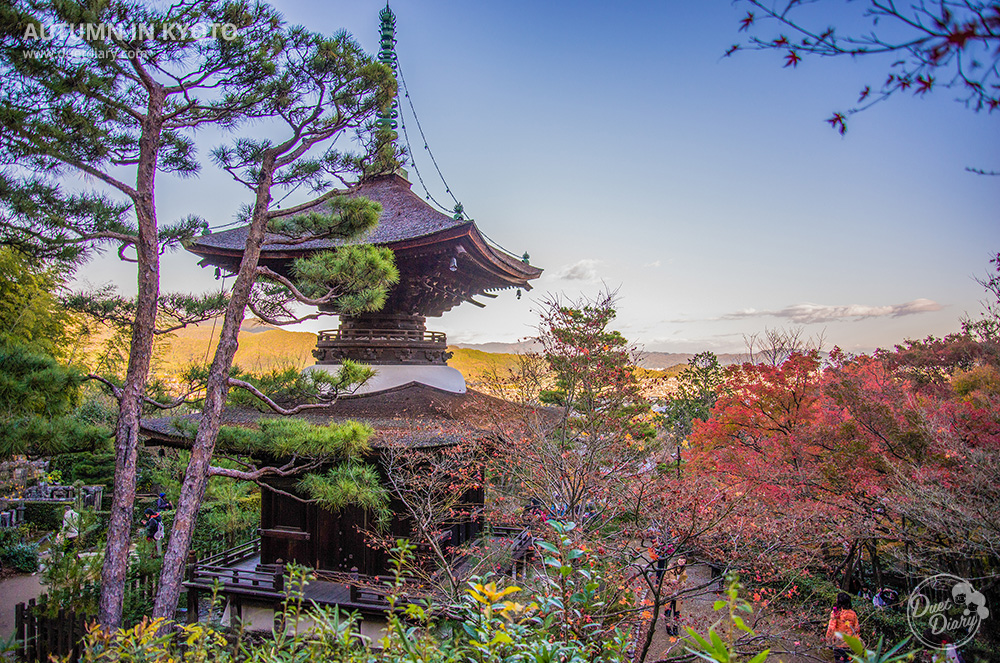
The light yellow and bright yellow ginkgo leaf rug looks fresh and lovely.

Once you reach the top, you can take pictures of the pagoda. If you come at the right time, the surrounding area will be even more beautiful with red leaves.

It was getting late and I was starting to feel hungry. I walked out of the temple, not far, but I couldn't remember the exact location. Then I came across this shop selling egg products.
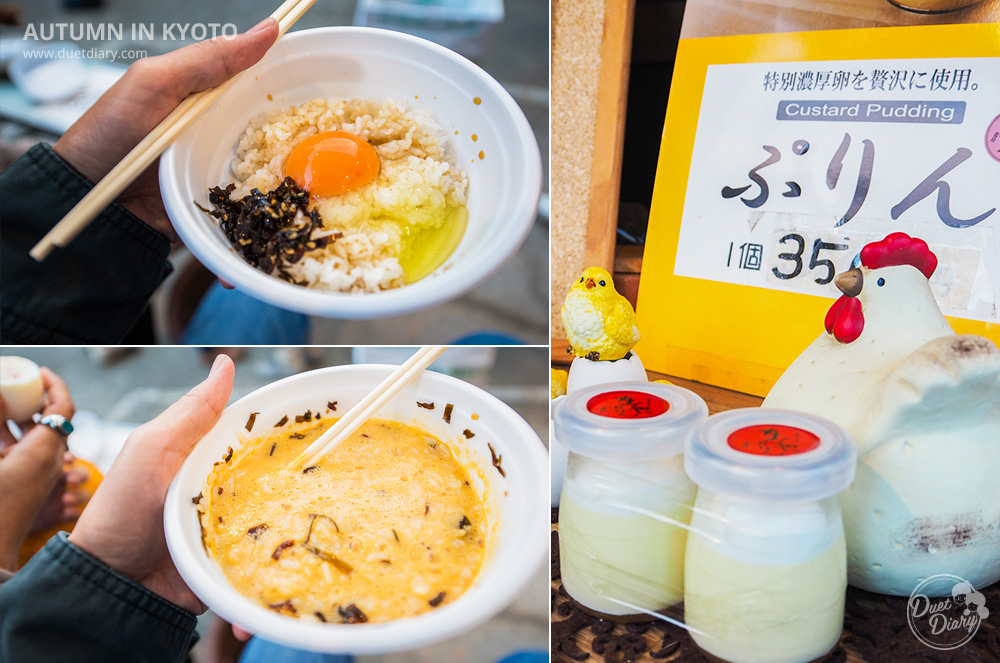
The eggs here are so fresh and colorful, it's hard to resist! I'm not sure if they raise their own chickens in the back, haha. The prices are listed on the sign: boiled eggs are 100 yen each and come with salt. Raw egg on rice is 320 yen for a bowl with one egg, or 500 yen for two eggs. Pudding is 350 yen per cup.
I ordered raw egg on rice. They will scoop hot rice and crack a raw egg on it, along with pickled vegetables. Add a little sauce and you're good to go. When it arrives, use chopsticks to mix the raw egg with the hot rice until it is evenly distributed, as shown in the picture. Then you can eat it.
The taste? Oh, it's incredibly delicious! The fresh eggs are so sweet and fragrant, it's unbelievable. There's no fishy taste at all. The eggs, pickled vegetables, and hot rice all go together perfectly. It's much better than the fast food restaurants in the city. I think it's because of the difference in freshness.
We're really tired from walking today. It's getting late, so let's stop by and grab something to eat before heading back to Osaka. We can stop by Kawaramachi and do some shopping and try some delicious food.

Get off at Kawaramachi Station and walk along the street until you find Shinyogoku Alley. This alley is like another Soi Lalai Sap (a famous shopping street in Bangkok known for its affordable fashion), but here, clothes are on sale everywhere. No matter which way you walk, you'll find discounted items.

Many shops are having promotions, the clothes are all beautiful. Some shops are very cheap. If you pass by, try to stop by and take a look.

Just a short walk from Shinyogoku Alley, tonight we're on the hunt for Katsukura, a legendary pork cutlet restaurant, for our last meal before heading back to our accommodation. The entrance to the restaurant is a small alleyway like this (borrowed image from Google Map because I forgot to take one).

This restaurant is very famous for its fried pork, so we had to wait in line for a while. However, the queue at this branch seemed to be shorter than the one at Kyoto Station. We waited for about 30 minutes and then we were able to eat. We got a seat in the basement.

To quench your thirst and relieve your fatigue, we offer chilled draft beer. As is customary in tonkatsu restaurants, we provide a sesame seed bowl and a mortar for grinding sesame seeds to accompany the fried pork and dipping sauce. Here, rice is served in a pot, and you can refill it as much as you like.

Here it is! Hot and crispy, fried to a beautiful golden brown, this set features pork and shrimp. The shrimp here are the highlight - large and firm all the way to the tip, not just batter when you bite into them. The batter is thin, just a light coating of breadcrumbs. When you bite down, the shrimp inside is fresh, bouncy, sweet, and incredibly delicious.

Another set is croquettes, soft meat mixed with mashed potatoes, crispy on the outside and soft until it melts inside. It's delicious.

We came here with three people, so we ordered three different sets. Each set costs around 1500-2000 yen.

I'm not sure what to call it, maybe a fried maki roll? It has ham and vegetables inside, and it's crispy and flavorful.

Let's try the restaurant's signature dish, the pork tonkatsu. It's truly worthy of a legendary restaurant. The pork is incredibly tender and sweet, while the outside is coated in a thin, crispy batter. The sauce is the restaurant's own recipe, with a rich and well-balanced flavor. Served with hot steamed rice, this dish is so delicious that you'll definitely need a second helping.

From Kawaramachi, it's not too far from Kyoto Station. If you can return from this station, take the train back. If not, you can wait for the bus or take a taxi to Kyoto Station. Especially if there are 4 of you, the cost will be about the same as the train fare.
Details of various locations
Tenryuji Temple, a Zen Buddhist temple in Kyoto, Japan.
Opening hours: 8:30 AM - 5:30 PM daily
Admission fee: 500 + 100 yen for entry into the building
Location : 35.015853, 135.673777
Jojakkoji Temple, Jojakkoji Temple
Opening hours: 9:00 AM - 5:00 PM daily.
Admission fee: 400 yen
Location : 35.019633, 135.668630
Katsukura Restaurant
Opening hours: 11:00 AM - 10:00 PM daily
Location 35.003958, 135.760896
Today, we went for a walk to see the red leaves and beautiful scenery, and we ate delicious food until we were full. If you are visiting Kyoto, please try to adjust this plan according to your own itinerary. Especially for those who are visiting during the autumn season, don't miss the Arashiyama area.
If you plan to travel during the fall foliage season, it is advisable to book your flights and accommodation well in advance. Otherwise, not only will the prices be higher, but you will also find it difficult to find available rooms as they tend to fill up quickly.
Stay tuned for the next episode.
Fan page : http://www.facebook.com/duetdiary
Blog : http://www.duetdiary.com , IG @duetdiary
See you next time.
Duet Diary
Friday, September 27, 2024 10:01 AM

